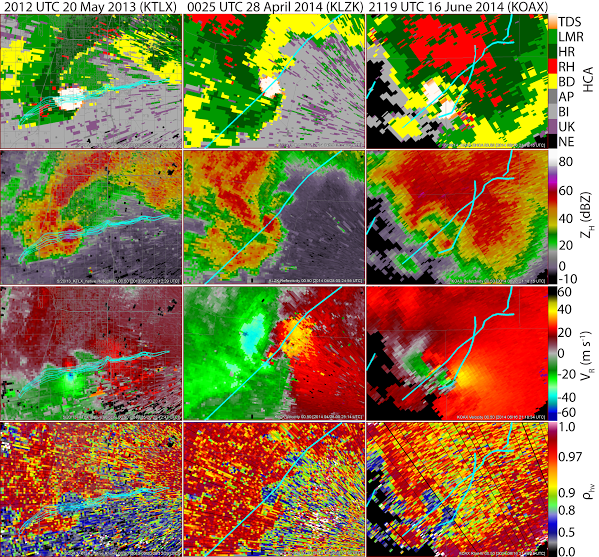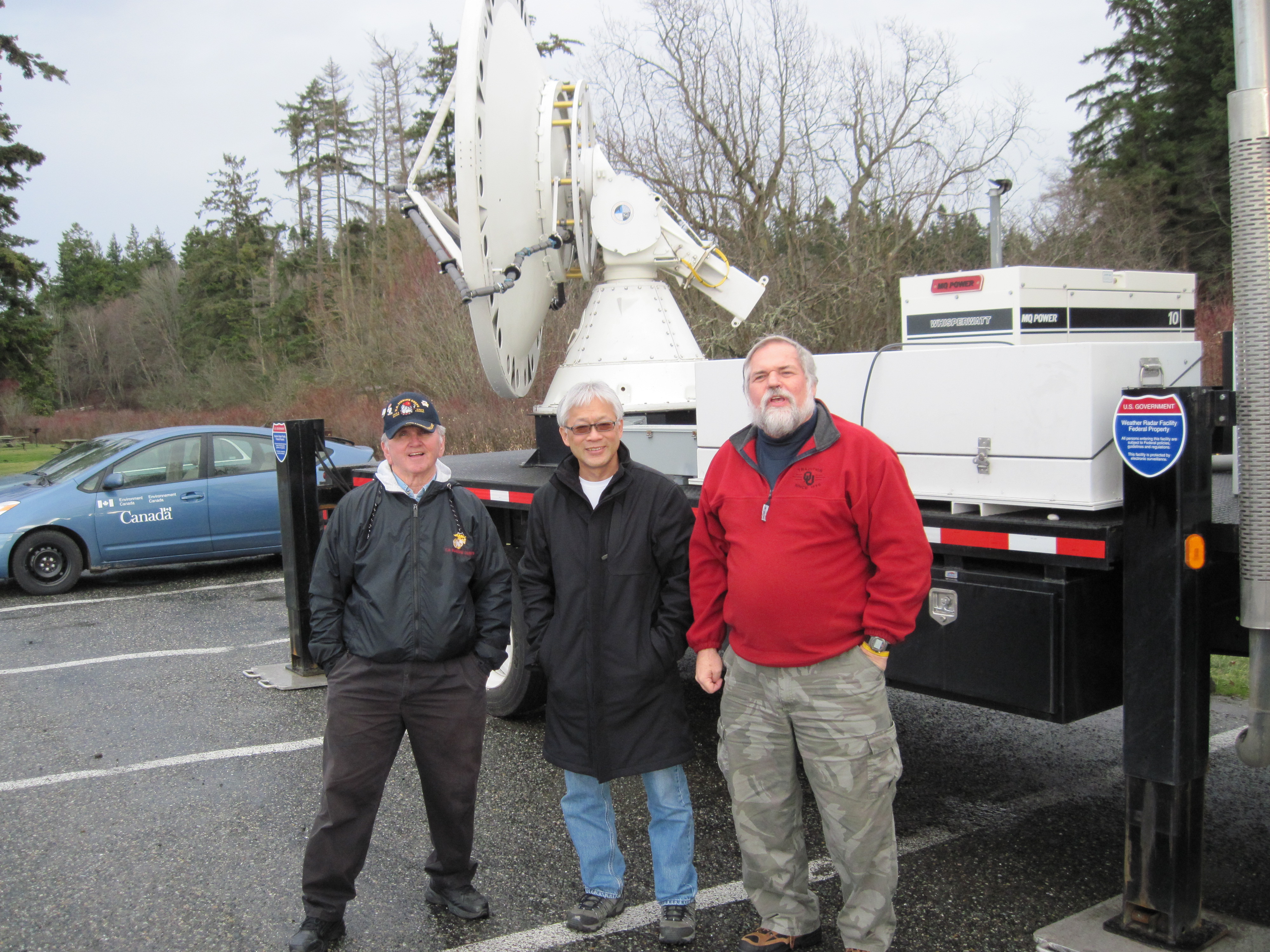
Environment Canada scientists visited NSSL on June 7 and 8 to learn more about dual-polarization research in preparation for the dual-polarimetric upgrade to their weather radar network. Canada does not have a research lab with emphasis on remote sensing of weather but has one dual-polarization radar that is used in operations.
Extensive discussions are now being held with NSSL on the technical details of polarimetric radar research including engineering, calibration, data quality, hydrometeor classification and quantitative precipitation estimation.
The two countries previously collaborated to adapt NSSL’s Hydrometeor Classification Algorithm to the Canadian radars which use a shorter wavelength than those in the U.S.
In the coming months, NSSL will work closely with Environment Canada to develop a robust algorithm to estimate snowfall in winter storms. The Canadian radar is located in a climate regime that regularly receives significant snowfall. An instrumented site nearby will allow comparisons of radar snowfall estimates and actual snowfall amounts.


